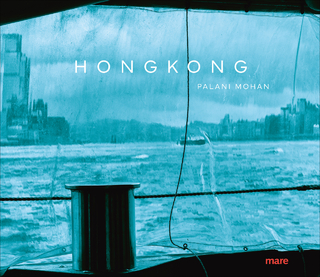
Collins Illustrated Guide the Hill Stations
Seiten
1990
HarperCollins Publishers Ltd (Verlag)
978-0-00-215589-2 (ISBN)
HarperCollins Publishers Ltd (Verlag)
978-0-00-215589-2 (ISBN)
- Titel ist leider vergriffen;
keine Neuauflage - Artikel merken
A guide to India's hill stations, which are set in the foothills of the Himalayas. Most of them were established by the British as places of cool refuge from the burning heat of the plains and they became centres of recreation and education, military bases and summer capitals of government.
India's Hill Stations are set among the world's most picturesque locations; in the foothills of the Himalayas overshadowed by the eternal snows of the world's greatest mountain chain, in the tea-growing areas of eastern India, and in the hills of western and southern India. Between 1,230 and 2,300 metres (4,000 and 8,250 feet), most were established by the British as places of cool refuge from the burning heat of the plains. They became centres of recreation and education, military bases and summer capitals of government. The Viceroy himself proceeded in pomp and circumstance across the sub-continent each year to Simla, the summer capital of the British Raj from where he ruled a fifth of mankind. Raj period bungalows still look out towards the snows, and narrow gauge railways built a century ago still wind up mountainsides. But the Hill Stations have grown since independence. Today they are India's greatest summer attraction and still have plenty to offer the out-of-season visitor.
This guide describes the most popular hill stations, but also takes the visitor off the beaten track to the hills of Kerala in the South, the tea gardens of Darjeeling and the coffee-clad slopes of Yercauld, and to the spectacular Dussehra festival of Kulu and the dairy temples of the tribes of Ootacamund.
India's Hill Stations are set among the world's most picturesque locations; in the foothills of the Himalayas overshadowed by the eternal snows of the world's greatest mountain chain, in the tea-growing areas of eastern India, and in the hills of western and southern India. Between 1,230 and 2,300 metres (4,000 and 8,250 feet), most were established by the British as places of cool refuge from the burning heat of the plains. They became centres of recreation and education, military bases and summer capitals of government. The Viceroy himself proceeded in pomp and circumstance across the sub-continent each year to Simla, the summer capital of the British Raj from where he ruled a fifth of mankind. Raj period bungalows still look out towards the snows, and narrow gauge railways built a century ago still wind up mountainsides. But the Hill Stations have grown since independence. Today they are India's greatest summer attraction and still have plenty to offer the out-of-season visitor.
This guide describes the most popular hill stations, but also takes the visitor off the beaten track to the hills of Kerala in the South, the tea gardens of Darjeeling and the coffee-clad slopes of Yercauld, and to the spectacular Dussehra festival of Kulu and the dairy temples of the tribes of Ootacamund.
| Erscheint lt. Verlag | 2.7.1990 |
|---|---|
| Reihe/Serie | Collins illustrated guides |
| Zusatzinfo | illustrations |
| Verlagsort | London |
| Sprache | englisch |
| Maße | 205 x 140 mm |
| Themenwelt | Reisen ► Bildbände ► Asien |
| ISBN-10 | 0-00-215589-3 / 0002155893 |
| ISBN-13 | 978-0-00-215589-2 / 9780002155892 |
| Zustand | Neuware |
| Haben Sie eine Frage zum Produkt? |
Mehr entdecken
aus dem Bereich
aus dem Bereich
Forschungsexpeditionen zu den spektakulärsten Orten der Erde
Buch | Hardcover (2023)
Prestel (Verlag)
CHF 64,90


